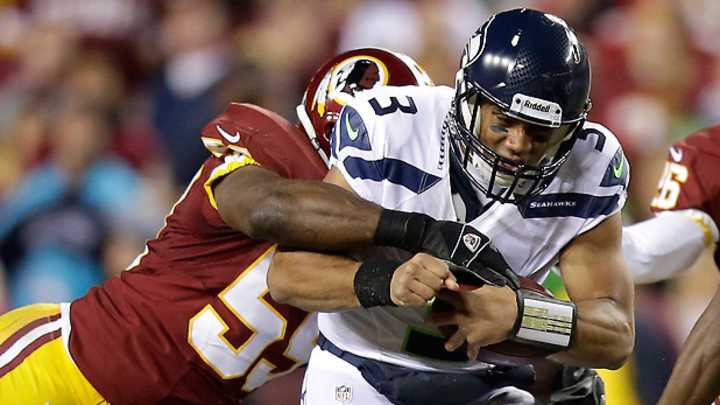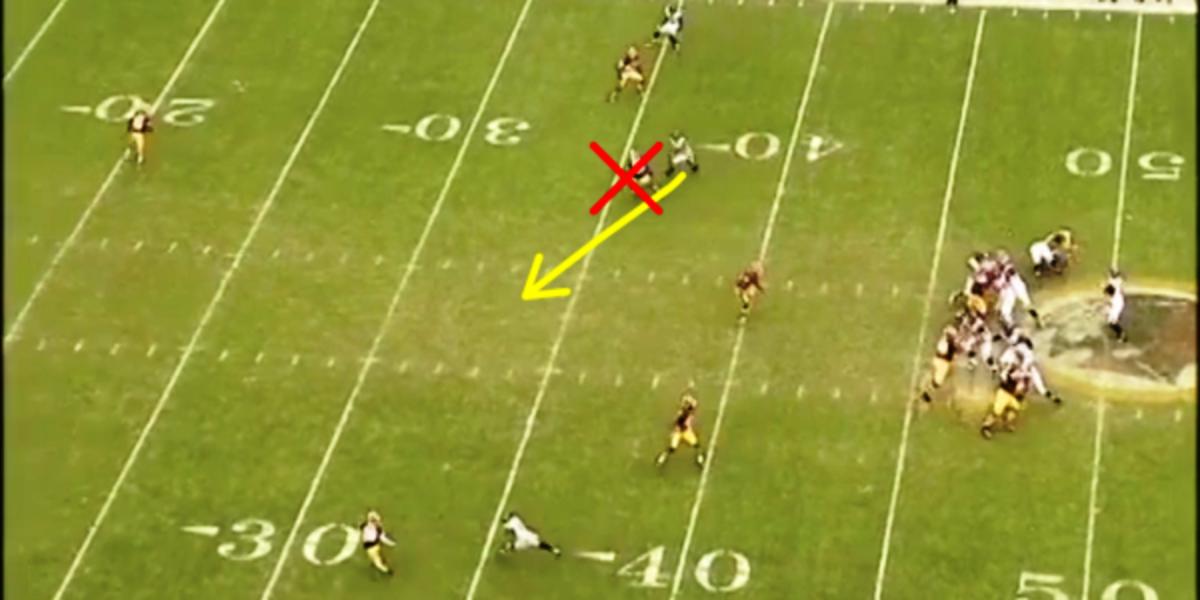Declining Player to Watch: London Fletcher

London Fletcher has played an NFL record 240 straight games. (Evan Vucci/AP)

As we power through the summer toward training camps, Chris Burke will highlight players that interest him this season for various reasons. This week, he's looking at three players who might regress in 2013.
If London Fletcher plays a full season, as he did in 2012 (and 2011 and '10 and every year dating back to when he was drafted in 1998), he'll have been on the field for 256 games in his career. Only two linebackers in NFL history, Clay Matthews (278) and Junior Seau (273) have played more.
Ray Lewis just called it quits at the age of 38, after an injury-plagued season. Brian Urlacher did likewise at 35. Many of the all-time greats at the LB position -- Jack Lambert, Mike Singletary, Dick Butkus -- hung up their cleats long before reaching their late 30s.
So, the 38-year-old London Fletcher's inclusion as a player in decline is less a knock on him or his abilities than it is an acceptance of football inevitability. Few players, especially at Fletcher's position have had the good fortune to stay in the NFL for 16 seasons. There would be no shame for Fletcher in admitting that he's lost a step, as Urlacher and Lewis essentially did.
Fletcher nearly followed them out the door. He did not make up his mind until March that he would come back for this coming season and only did so once he was convinced that offseason elbow and ankle surgeries would not keep him out of the lineup once Week 1 rolled around.
The Redskins will be happy to have him back. He led the team in tackles with 139 last year (though his 78 solo tackles were his lowest total since the NFL started tracking the stat in 2001) and led the league with 166 two seasons ago. Washington also did very little to upgrade at inside linebacker, meaning Fletcher and Perry Riley will be asked to play nearly every snap, as both did in 2012.
Therein lies the problem.
Fletcher graded out as the Redskins' worst defender for last season (by a large margin) on Pro Football Focus, and he ranked just 51st out of the 53 inside linebackers who played at least 25 percent of their teams' games. And the majority of Fletcher's issues came in the pass game. Because the Redskins wanted their best tackler on the field at all times, Fletcher only really subbed out of games when he was banged up.
So quarterbacks went right after the veteran linebacker, exploiting the Redskins' scheme to create one-on-one mismatches between Fletcher and some of the league's best tight ends and running backs.
Here's what we are talking about, from Washington's loss to Carolina last season:

Fletcher has the red "X" there, and Carolina TE Greg Olsen, who ran a simple out route on the play, is circled. This is a look that the Redskins' defense used often -- five on the line (three defensive linemen plus OLBs Brian Orakpo and Ryan Kerrigan), one deep safety and a second safety walked up into almost linebacker position.
Riley, lined up to Fletcher's right, drifted into the flat to cover DeAngelo Williams out of the backfield. The safeties split the field -- one taking the receiver up top, the other at the bottom -- to provide bracket coverage on Carolina's pass-catchers.
The result of all that movement was that Fletcher had a huge chunk of land in which to cover Olsen

Teams ran patterns like these time and again against the Redskins, leaving the 5-foot-10 Fletcher to deal with either tight ends who had size advantages on him or running backs who exploited him sideline to sideline.
Another example here, as Tony Gonzalez faked an out route, then cut back in to the middle of the field for a reception.

Here, again, we can see just how much real estate Fletcher was responsible for on many of these plays:

The Falcons earlier utilized motion to orchestrate a similar circumstance for Roddy White. Even the best coverage linebackers in the league would have substantial difficulties staying with Olson, Gonzalez, Ahmad Bradshaw and other dangerous offensive weapons one-on-one, let alone a player like White.
The results, then, were rather predictable: Fletcher allowed a staggering 70.1 completion rate on passes his direction, per Pro Football Focus, including 100-percent showings by Eli Manning and Cam Newton. Though Fletcher finished with a career-high five interceptions, he also allowed five touchdown passes and an average of more than four completions per game.
This is a problem that's not going away, as Fletcher nears the end of his career road.
His presence in the locker room and as the defense's play-caller, in addition to his elite tackling ability, have allowed Fletcher to stay on the field. Even headed into this season, with Fletcher possibly in his final go-round and coming off a difficult year, the Redskins did not add any notable depth at ILB behind Fletcher and Riley.
Fletcher muddled through multiple injuries last season, so perhaps his offseason trips under the knife will help there. But it may be unrealistic to expect a 38-year-old iron-man linebacker to be at 100 percent for a full season.
